- Scott Mckeating
- Albums and Singles
Beginning like a collection of sellotaped Lee Perry 'before the band arrived' loops, Chainsaw cultivates a very obvious outsider vibe. With an unfledged guitar technique that he uses to strum out half-lost echoed melodies, the music sounds like a rambling weirded-out blurb.
Phased strings clog with rainwater are wrapped up in magnetic tape, Joey Chainsaw's music is the epitome of hands on: and there is dirt under those nails. This very un-pretentious, but wobbly record, sounds like the result of play/record numerous sessions. Post-production is for the sane.
Read More
- Administrator
- Albums and Singles
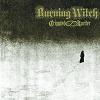 This is a reissue of a reissue, the original version of consolidated Burning Witch's two releases onto one CD. This new version splits them onto separate discs and includes other tracks recorded at the time that ended up on split releases with Goatsnake and Asva. Considering Burning Witch releases are now nigh on impossible to find, it is a good job Southern Lord have made this (rather lovely looking) package. The music is heavy beyond heavy; by the end of the two discs I am left with a feeling of having pushed a boulder up a hill for eternity and thinking that eternity is not long enough.
This is a reissue of a reissue, the original version of consolidated Burning Witch's two releases onto one CD. This new version splits them onto separate discs and includes other tracks recorded at the time that ended up on split releases with Goatsnake and Asva. Considering Burning Witch releases are now nigh on impossible to find, it is a good job Southern Lord have made this (rather lovely looking) package. The music is heavy beyond heavy; by the end of the two discs I am left with a feeling of having pushed a boulder up a hill for eternity and thinking that eternity is not long enough.
The first CD features the Towers… album along with "The Bleeder," which was recorded during the same sessions. Listening to this now is still an experience, extreme metal has not really moved on from the treacle black dirge of this album. Stephen O'Malley may have refined the formula along with the other members of Khanate but the blueprints are all roughly the same. There is a heavy dose of Norwegian black metal in the sound but combined with the brute, slow force of Swans; the mood is crushing, bleak and darker than the charred remains of a burnt witch. There is little evidence of the Sabbath worship that most doom bands go in for, the riffs are colossal but cut from a completely different form of rock than Tony Iommi etches his out of.
Fossils that would later evolve into Sunn O))) riffs can be heard on "Sacred Predictions": the gruelling chug that propels the track sounding like the precursor to the caveman riffs of The Grimmrobe Demos. Steve Albini captures the monstrous power of the music; the drums are immense, like they are bursting through reality, and the vocals rip through the mix like a razor. "Sea Hag" is this disc's best point, nearly a quarter of an hour of sludgy despair. Edgy 59's vocals sound more like the cries of the tormented than a living human and it is impossible not to feel uneasy during this song.
The second CD contains the material from the Rift.Canyon.Dreams sessions where Burning Witch change drummers to continue the bludgeoning. These songs have never quite hit me in the same way as those from Towers…, to say that Burning Witch became formulaic is wrong but that is the closest I can come to expressing my feelings on Rift.Canyon.Dreams. That being said, the group still absolutely slay all pretenders to the throne. The over-long "Stillborn" does take the wind out of this disc's sails, killing the atmosphere that is built up on Towers… but luckily "History of Hell (Crippled Lucifer)" finds the group pummelling their instruments (and vocal chords) to create a fantastic slab of doom.
Burning Witch remain as potent today as they were a decade ago. In fact they sound more potent now as they highlight how weak many metal bands are in comparison. Sunn O))) and Boris may have opened up the doors for a whole new generation of extreme metal fans but Crippled Lucifer will open up the gates to an underworld they did not know existed. This is a remarkable collection of recordings that has deserved the reissue treatment for some time. I knew what to expect but for a newcomer, this will blow their ears off. If it was not an old release this would instantly be my album of the year.
samples:
Read More
- Administrator
- Albums and Singles
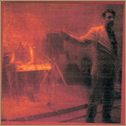 With Heather Leigh turning her pedal steel loose on audiences across Europe, this live disc is more sonically aggressive than her previous releases. In performance Heather might have usually sat static at her pedal steel tearing at the strings, but the sounds still have the ability to rear up and forward like some venom sluicing cobra. Her evolution towards something between the state of song and primacy continues, but this time with sinews motorized by force.
With Heather Leigh turning her pedal steel loose on audiences across Europe, this live disc is more sonically aggressive than her previous releases. In performance Heather might have usually sat static at her pedal steel tearing at the strings, but the sounds still have the ability to rear up and forward like some venom sluicing cobra. Her evolution towards something between the state of song and primacy continues, but this time with sinews motorized by force.
Murray's music always brings to mind the idea of sinew, of something organic and muscular but twisted and reformed in a funhouse mirror. "It Dreamed To Me" is a howl, a tone screaming tail lash where treble and Murray merge. The phosphorescent glow of this amalgam pulls at time like strings of chewing gum, Murray delivering pre-folk modes of song. This unconscious primal lament turns to irrational rant, a disorientating swoon of psychedelic shimmer. This opener also features a respite of harmonica playing, the sound rooted to both the desert states of America and of the mind.
Americana is also present in the title of "Railroad Flats," a piece of straight up gone and a paean to slo-mo drowning. This blistering purge of creased light is a turned up roar, drowning out the world in a Haino overdrive. This lengthy tract of split blood and tension is probably her heaviest molten metal yet. Beginning with solo vocals, "Alto Purus Mashco Piro" is the odd lulling warmth of an instrument born for war. This choral melody is soon violated by the falling rain streaks of the accompanying pedal notes. While it is certainly loud, it is not fierce as it predecessor, relying more on tolling play than eye boiling.
samples:
Read More
- Administrator
- Albums and Singles
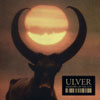 Dark, brooding music from Norway usually involves corpse paint and an obscure relationship with Satan or other so-called dark forces; indeed, restraint and delicacy are hard to come by in the world of spiked gauntlets and troll vocalists. On the other hand, bands like Ulver write albums like Shadows of the Sun, demonstrating that fragile arrangements and understatement are often more oppressive than any heavy-handed guitar riff.
Dark, brooding music from Norway usually involves corpse paint and an obscure relationship with Satan or other so-called dark forces; indeed, restraint and delicacy are hard to come by in the world of spiked gauntlets and troll vocalists. On the other hand, bands like Ulver write albums like Shadows of the Sun, demonstrating that fragile arrangements and understatement are often more oppressive than any heavy-handed guitar riff.
Jester
Ulver have been reinventing themselves over the past 14 years, providing substantially varied records that would please everyone from the black metal enthusiast to the Vangelis junky. When the band's reach exceeds its grasp, the results are shaky at best, but when their focus overrides any tendency towards flamboyance, they're just as likely to seem brilliant. Shadows of the Sun represents their brilliance; despite a number of contributors and a string quartet, this record is ascetic and tightly knit. It resonates and hums meditatively, avoiding bombast in favor of careful dynamics and subtle crescendos. The environment of sound they build over 40 minutes is lethargic and murky, beginning with the icy "Eos." The simple melody of a cathedral-like organ burns slowly beneath Kristoffer Rygg's half-whispered, half-sung vocals before Pamelia Kurstin's beautiful theremin playing elevates the song and adds an oddly enchanting quality to it. By the time the string quartet has entered, it is difficult to distinguish the various instruments from each other as they all breathe together and create an immense gravity that gives the song an almost religious quality.
"Eos" makes the plain this album's strongest and weakest points. The arrangements are, from start to finish, elegant and simple without ever being dull. The lyrics, however, always leave a little to be desired. Rygg's voice is a pleasant tenor, but his poetry is sometimes over-simple and sometimes outright silly. As a human instrument he adds a priceless depth to many of the record's best songs (especially "All the Love"), but as a man of words he often fails to invoke much more than romantic idealism or youthful wonder. Nevertheless, songs such as "Vigil" call to mind hopeless scenarios and impossible odds rather than the vibrancy of life. "Vigil" in particular utilizes chanted vocals and edited sounds to evoke desolation and destruction; Christian Fennesz's contributions to the track are well-employed. As the tension of that track breaks, the swirling title track takes over and establishes a stasis that would not be as effective if it weren't for the way the band arranged these songs and drew them together.
Also of note is the band's exemplary cover of Black Sabbath's "Solitude." With melody and rhythm intact, Ulver take the song apart piece by piece and reassemble it with war drums, ravaged vocal chords, and a muted trumpet performance that speaks of more loneliness and pain than any flute ever could. I had not paid any attention to the tracklisting the first time I listened to this and when the cover came on it was both a shock and a welcome surprise. It fits in with the rest of the record and though it is perhaps the most conventionally arranged song on the album, it almost comes as a relief. The familiar bass line breaks up the suffocating elements of the record and give it a liveliness it would not have without the cover. The final songs are filled with extended string notes and bass-heavy piano performances that are as crushing as Sabbath's heaviest riffs; it is an uneasy ending to a record, but a fitting one. As morose as these songs are, I find myself returning to them over and over again. Gloom-ridden as it is, Shadows of the Sun is a spellbinding blend of careful composition and exact production.
samples:
- All the Love
- Vigil
- Solitude (Black Sabbath cover)
Read More
- Administrator
- Albums and Singles
 Back in 1993, Inade released Burning Flesh on two cassettes which immediately made an impression on the underground music scene, with its blackest of black dark ambient sketches and soul-crushing gloom, and established the reputation and credentials of the two protagonists René Lehmann and Knut Enderlein. The follow-up, Aldebaran, originally released in 1996 equally caused something of a commotion when news of its imminent reissue–in a new third, unlimited, edition–emerged earlier this year. For those of us who missed it the first time around, myself included, this has been something of a much anticipated release.
Back in 1993, Inade released Burning Flesh on two cassettes which immediately made an impression on the underground music scene, with its blackest of black dark ambient sketches and soul-crushing gloom, and established the reputation and credentials of the two protagonists René Lehmann and Knut Enderlein. The follow-up, Aldebaran, originally released in 1996 equally caused something of a commotion when news of its imminent reissue–in a new third, unlimited, edition–emerged earlier this year. For those of us who missed it the first time around, myself included, this has been something of a much anticipated release.Aldebaran is eight tracks of gloriously gloomy and hellish doom ambience lasting for over an hour. Mikael Stavöstrand’s Inanna had also explored similar territory around the same time, but Inade had brought the genre to a pitch of perfection with this release; the duo floated to the top of the black pool that is the dark ambient genre and their reputation became totally entrenched, both in terms of their vision and the quality of the releases.
Aldebaran is based around the German Vril Society of the interwar years and their myths concerning the star. It was considered to be the Black Sun of the Secret Knowledge, in other words, unadulterated spiritual power. According to their doctrines the origin of that universal spirituality emanated from this very star—along with the human race—but given the later developments in German interwar politics and with the creation of organisations such as the Vril and Thule Societies the malign aspects of so-called 'spiritual' power became all too apparent.
With this in mind, there is, above all, a vast freezing coldness bestriding the entire album, a reflection of that malignity and the cold stretches of airless space in the gulf between our supposed origins and our home perhaps. It must be supposed that members of this society lamented the separation from their 'brethren' and that they keenly felt that separation. On here it is captured in that very freezing coldness to perfection. In keeping with history's view of later events, a streak of hidden malice runs through this, with walls of solid black tones, pulsating waves of bitterness, crushing explosions of noise, wails and voices dragged from the very depths of hell itself, along with blanketing swathes of night-encrusted hatred, alien skitterings echoing in dank cathedral spaces and, brooding over all, a coldly calculating demonic intelligence that is the inhuman heartbeat of the album. The word uplifting could never be applied to this release, the malicious vein of misanthropy is almost a tangible force that beats you around the head.
Just like any other type of music there are those whose output is merely competent and workmanlike. There's no pretence at originality—simply taking what others have done and regurgitating it—and they offer nothing ground-breaking. Inade however were forging a new style then, pushing the envelope to use the vernacular, and even today, nearly 12 years later and with all the developments within the genre during that time, it still feels fresh and innovative and can hold its own. I can almost guarantee that the same will hold true of Aldebaran in another 12 year's time.
samples:
- Signals from 68 Dimensions part I
- The Crushing of Earthly Foundations part I
- The End of the Beginning part I
Read More
- Administrator
- Albums and Singles
 All the trademark stylings and sensibilities that have helped to propel Masami Akita's name to the top of the list of respected noise artists are here in abundance on this single 41:29 track CD, released on No Fun's own No Fun Productions label and wrapped in a gorgeous cover drawn by Akita himself.
All the trademark stylings and sensibilities that have helped to propel Masami Akita's name to the top of the list of respected noise artists are here in abundance on this single 41:29 track CD, released on No Fun's own No Fun Productions label and wrapped in a gorgeous cover drawn by Akita himself.
Within those 41 minutes and 29 seconds is everything from explosions of harsh electronic grind, bursts of whispering static, and grating insectoid rasping; to screeching feedback, thick washes of overwhelming wall-of-noise blasts, siren wails, and rhythmic pulsing. The real trick though that makes this a successful release is the artfulness with which Akita constructs the piece. Rather than assaulting the ears with a constant barrage of barely listenable noise he has layered his material in such a way as to keep the listener constantly engaged, sculpting his creation carefully and precisely. I normally have to be 'in the mood' to listen to extreme noise, but a mark of the quality of Akita's music on this live recording is that I never once found myself thinking "When is this going to end?". Instead, I followed the constantly evolving musical landscape unfolding avidly, as well as the twists and turns, the building and breaking down. What's more—and this for me is something of a litmus test of quality—I can listen to this repeatedly and find something new every time.
I admit I'm a fan; I find Merzbow's music a form of sonic alchemy and Akita having been around for nigh on three decades—and having released somewhere in the region of 300 or more albums in that time—he has had the time to finely hone his craft and get to know the essences of his base materials. The finesse with which he marshals, molds, and creatively manipulates the lead of the raw sounds, finally transmuting them into the gold of his art is, for me, astonishing. Most of us go out of our way to avoid noise in our daily lives but artists such as Merzbow encourage us to look at noise in a different way, to embrace it and see it as a thing of beauty. That is what good art SHOULD do.
samples:
Read More
- Administrator
- Albums and Singles
 This Portland, Maine based group are members of art-punk-prog-chaos collective Cerberus Shoal along with North East Indie labelmate Micah Blue Smaldone reinvented as a kind of mutant 'bluegrass/folky' quintet using traditional instruments (plus a few unusual ones) such as upright bass, banjo, piano, harmonium, and accordion in addition to harmonized vocals. This is anything but traditional bluegrass or folk, however, as there's a distinctly uneasy edge and fractured sense of reality bordering on dark psychedelia that removes it a million miles from the mainstream forms of those genres, while also acknowledging the debt owed to those uniquely American styles of music.
This Portland, Maine based group are members of art-punk-prog-chaos collective Cerberus Shoal along with North East Indie labelmate Micah Blue Smaldone reinvented as a kind of mutant 'bluegrass/folky' quintet using traditional instruments (plus a few unusual ones) such as upright bass, banjo, piano, harmonium, and accordion in addition to harmonized vocals. This is anything but traditional bluegrass or folk, however, as there's a distinctly uneasy edge and fractured sense of reality bordering on dark psychedelia that removes it a million miles from the mainstream forms of those genres, while also acknowledging the debt owed to those uniquely American styles of music.
This is a Web site/live gig only release and comes in beautiful handmade packaging: an original piece of artwork by band member Colleen Kinsella and printed on good quality card stock while the lyrics and credits are printed on vellum. According to the Young God Web site Michael Gira—who also shared production credits with FoF's Caleb Mulkerin—has "an adamant belief in the music" and, to be blunt, I couldn't agree with him more.
This is startlingly haunting, atmospheric, shimmering, and scintillating music, channeling directly into the true heart of life and America, in much the same way as Britain's dark folk current does, scratching beneath the surface glitz and glamor to the hidden and unvarnished every day. Mulkerin's tremulous voice, reminding me of Neil Young without the nasally whine, is a perfect foil for the themes of liberty betrayed, life, death, the curse of old age, and amnesia. Running through each of the five songs is a frisson of edgy tension between the deliciously dark and poetic lyrics—often sung in male/female harmonization—that contrast sharply with the musical backdrop of picked banjos, guitar, piano, and simple percussion. I had shivers running up and down my spine, such was the effect of these offbeat tales of modern life.
Love, loss, friendship, pain, and just the plain old job of getting on with living: it's all there in buckets and delivered with an uncomplicated passion and, moreover, a simplicity that's refreshing. This is, quite simply, a breathtakingly beautiful set of songs.
samples:
Read More
- Administrator
- Albums and Singles
 Although Rhythm & Sound's estimable reissue campaign of the Bronx’s formidable and nearly forgotten Wackies label has garnered much praise among critics and fans, just about every new resurrected release from the comparatively hodgepodge Basic Replay sister imprint garners at least as much if nor more excitement among sound system selectors and hungry collectors. Compiling sixteen mostly vinyl-only tracks from the label’s small yet potent catalog, this overdue disc finally brings these scorching, mostly digital tunes to the unaware masses.
Although Rhythm & Sound's estimable reissue campaign of the Bronx’s formidable and nearly forgotten Wackies label has garnered much praise among critics and fans, just about every new resurrected release from the comparatively hodgepodge Basic Replay sister imprint garners at least as much if nor more excitement among sound system selectors and hungry collectors. Compiling sixteen mostly vinyl-only tracks from the label’s small yet potent catalog, this overdue disc finally brings these scorching, mostly digital tunes to the unaware masses.
Those who enjoyed the dancehall style of Basic Replay's 2006 essentials White Mice and White Mice Versions have plenty to get excited about here. As should be expected, young Allan Crichton, sounding significantly more mature here on "Nothing Ever Done Before The Time" than the high-pitched boy of those essential Intelitec collections, absolutely kills it over tough machine beats and horns. Chuck Turner and Professor Grizzly go head-to-head with their respective vocal takes over one of the most fantastic riddims I have ever heard. Although Turner's marginally superior "Trying To Conquer I" rails courageously against the vampires that attempt to undermine righteous Jah people, Grizzly more than holds his own while scatting rapid-fire over "Fight The Professor." Onetime Black Uhuru vocalist Andrew Bees wails exquisitely in the tradition of his predecessors Michael Rose and Junior Reid with "Militant." Spouting a signature "tu tu twang" over the bubbly grooves, the underestimated soloist's performance dares wonder-stricken listeners not to seek out his hard-to-find 1995 Music Lion / Ras Records album of the same name.
Although the dancehall numbers dominate, roots-and-culture devotees will relish the soulful Rastafarian vibes of arists like King Culture that define the other side of Basic Replay's output. Ijahman Levi treats us to two gloriously deep tracks, "I Am A Levi," heard by many on his Haile I Hymn LP, and its expansive dub "Part 2." Digging deeper, the late dark prince of reggae Keith Hudson graces us with his presence with the brief but effectively jarring tribalism of "Hunting," while a haunting organ line and some sparse vocals, male and female, drive the legendary Jackie Mittoo's "Ayatollah" into a shadowy corner worth exploring further.
While it is an altogether unparalleled tastemakers' selection, my sole grievance with Basic Replay is an admittedly selfish one. Save for rare cases, the flipsides of the cuts featured here are tragically missing, something that could have been rectified with a second disc at an appropriately higher price. Naturally, this allows the aforementioned vinyl coveters to maintain some precious exclusivity in their crates, adding an intangible value best experienced in a dancehall than on an iPod.
samples:
- Chuck Turner - Trying To Conquer I
- Jackie Mittoo - Ayatollah
- Andrew Bees - Militant
Read More
- Administrator
- Albums and Singles
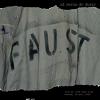 This double live album documents the group's first foray into Polish territory. The sound quality is vastly superior to last year's In Autumn box set of live recordings. Each little noise right up to the mightiest clamour is captured quite clearly; it is almost possible to smell the sweat.
This double live album documents the group's first foray into Polish territory. The sound quality is vastly superior to last year's In Autumn box set of live recordings. Each little noise right up to the mightiest clamour is captured quite clearly; it is almost possible to smell the sweat.
Faust open with a new song called "Sex," an improvisation leading on from a recording of a man speaking about sex in German (referring to the act, not the number). This piece sets a high standard for the rest of the album, the raw power of the band is like a truck hurtling out of control and heading straight for where I am sitting. "We Are Not Here…" raises the bar again in terms of sheer brute musical beauty. Although I unfortunately must experience Faust live only through these second hand experiences, on Od Serca Do Duszy it is possible to feel the danger and excitement that the group are renowned for.
It is not all flexing muscles and battering sheet metal into smithereens; the gorgeous "Our Soul to Your Ears" provides a welcome breather amidst the raucous din. Here Jean-Hervé Péron urges the crowd to shut up and (amazingly!) they do. The band then use this almost blank canvas to sketch out a delicate piece of music that proves that they are not just living off the glory days of their youth. This is only the eye in the storm as the peace quickly gives way to "Ist Rund Schoen?" I have never been big on this song in any of its previous incarnations but Poland must have brought something great out in Faust as it is a cracker here.
The second disc sees Faust in improv mode, half of this disc is given up to two wild tracks of jamming. "Impro: Krakow I" is the kind of song that would make Acid Mothers Temple extremely jealous. An encore of their signature tune ("Rainy Day Sunshine Girl") is the icing on an already sweet cake. It is as vivid an image of an instant in time as one could hope for. Indeed, as live albums go (and live Faust recordings for that matter), Od Serca Do Duszy is a decent stab at capturing a band in the moment.
samples:
Read More
- Administrator
- Albums and Singles
 This is a mixed bag; there are sections that are incredible and beautiful but unfortunately there is an equal amount of music that is difficult to digest. It sounds like something I should be into, however there is something missing or that I am not getting that is preventing me from fully appreciating this album. Maybe it is the fact that many of these pieces were written and recorded for exhibitions and installations that leaves the music feeling a little empty.
This is a mixed bag; there are sections that are incredible and beautiful but unfortunately there is an equal amount of music that is difficult to digest. It sounds like something I should be into, however there is something missing or that I am not getting that is preventing me from fully appreciating this album. Maybe it is the fact that many of these pieces were written and recorded for exhibitions and installations that leaves the music feeling a little empty.
"The Stillness of Chinese Jars" and "Kettleblack" both reflect Mouldycliff's best musical sides. The chiming calm of "The Stillness of Chinese Jars" makes for an exceptionally pretty piece of music. Taking this prettiness and warping it, "Kettleblack" makes for an unsettling and disorientating five minutes. There is a strong sniff of David Lynch-style atmospherics throughout the piece and the sounds conjure up very lucid images; in my mind's eye I can see a very slow shot panning across an empty, rather ordinary but slightly askew room.
The longest piece on Written on Water breaks the spell that Mouldycliff initially casts on the listener. It is hard to pick out what it is exactly that makes "A Speculative Atlas (for David Mitchell)" so hard to listen to. It all sounds a bit clichéd, the sustained notes on the wind instruments and the flurries of piano noodlings bursting in every now and then. One element that I felt did work is the sound of children pushed way back in the mix. The first time I listened to it I did not know whether kids were causing havoc outside or whether it was on the CD.
On the final piece, "Spirit of Place," there are elements both of The Hafler Trio and Nurse With Wound which is not surprising considering the involvement of Colin Potter as producer. This is where Mouldycliff actually shines, even if it is heavily indebted to what other artists have done before. Mouldycliff never reaches the same psychedelic heights as these other artists but it is hard not to slip into a daydream listening to the heady drones of this piece.
Aside from those few pieces where Mouldycliff loses his footing, Writing on Water is an enjoyable but a bit of a journeyman selection of experimentations. When he is at his weakest, he is still at least worth a listen to try and figure out what is not sitting right with me. I feel his music is something I should appreciate but cannot pinpoint the cause of my discomfort while listening. Every year I read Conrad's Heart of Darkness because I do not enjoy it and feel I must. One day it surely will fall into place. I get the same feeling from this album. There is something worth investigating here but there is also some invisible barrier in my way.
samples:
Read More
- Administrator
- Albums and Singles
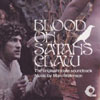 The phenomenal Trunk label keep up their unique work by giving Marc Wilkinson's score for a 1971 cult British horror movie its first ever release. Film fans, soundtrack aficionados, and addicts of obscure music will all be thrilled, as Blood on Satan's Claw is beautiful and disconcerting in equal measure.
The phenomenal Trunk label keep up their unique work by giving Marc Wilkinson's score for a 1971 cult British horror movie its first ever release. Film fans, soundtrack aficionados, and addicts of obscure music will all be thrilled, as Blood on Satan's Claw is beautiful and disconcerting in equal measure.
Most of my memories of the golden age of British horror involve sitting on couches in the homes of various friends sometime around 11:45 pm on a Friday or Saturday night, drunk, eating chips or toast. Hopefully, on the television would be a historical drama that was ever so slightly camp, fairly nasty (without excessive gore), reassuringly predictable in terms of plot, and full of titillating flesh! Ideally, the craft of solid character actors could allow the proceedings to avoid both tongue-in-cheek complacency or wooden heroics, and the nudity might provide lashings of conflicting evidence for what may now be called the Darryl Hannah/Betty Page conundrum. For sure, the shifting atmospheres of suspense, lust, confusion, mystery and fear would always depend upon the music.
As befits the soundtrack to a quality movie from the Tigon production team that three years earlier had made the remarkable Witchfinder General, there is something decidedly off-kilter and addictive about this music. It was designed that way. For starters, composer Marc< Wilkinson added a couple of twists to the standard orchestral lineup. The eerie swooping sounds were created by using the Ondes Martinet, a keyboard which he describes as "without doubt the first really successful electronic instrument." In addition he used the cimbalom, a kind of piano played with mallets that in Eastern Europe has sometimes been associated with the Devil. The unease that this music stirs has roots that are deep and ancient. As Wilkinson reveals: "The descending chromatic scale which features throughout the music omits the perfect fifth (the only true consonant in the chromatic scale) and therefore highlights the diminished fifth, which ever since the middle ages in Europe has been known as the Devil's Interval!"
If that all sounds rather academic then fear not, for parts of this disc are almost as lush as the theme from the 1964 TV series Robinson Crusoe, a tad spookier than the Dr Who theme, and as alluring as both. Blood on Satan's Claw fits perfectly with the vision of label boss Jonny Trunk. Trunk unearths gems which transcend kitsch and nostalgia by celebrating the sonic quality of their essence. The label has issued John Cameron's music from Kes, sublime smut from a 1970s English porn queen on Mary Millington Talks Dirty, original music by Delia Derbyshire and others from the TV series The Tomorrow People, and the lost advertising sounds of Music For Biscuits. Trunk has also put out an unreleased soundtrack to George Romero's Dawn Of The Dead, Oliver Postage's music from the children's TV show The Clangers (the first 26 vinyl copies in pink and gold hand knitted sleeves) the soundtrack to the insane biker movie Psychomania, and music from Gerry Anderson's still sexy and hip space TV show UFO. That's not to mention Resurrection (an album of holy jazz, altar rock and Christian freakouts) or Desmond Leslie's Music Of The Future—the "musique concrete" of an ex-spitfire pilot who created music from the sound of the destruction of musical instruments. It would be remiss to forget to mention the records of "ambient godfather" Basil Kirchin. His band sometimes included Jimmy Page and Tubby Hayes and Abstractions of The Industrial North is but one of his fabulous records. Doing justice to the Trunk catalog in a single paragraph is impossible but it's safe to say that the wise will want to avoid missing their limited issues. The recent sampler Now We Are Ten is a great place to start.
Of course, not everyone has Trunk's ear or cultural instinct: the film Blood on Satan's Claw was released in the US as Satan's Skin but, without wishing to give away the plot, it's hard to escape the feeling that whoever chose that title missed a great opportunity to call it Satan's Eyebrows.
samples:
Read More

